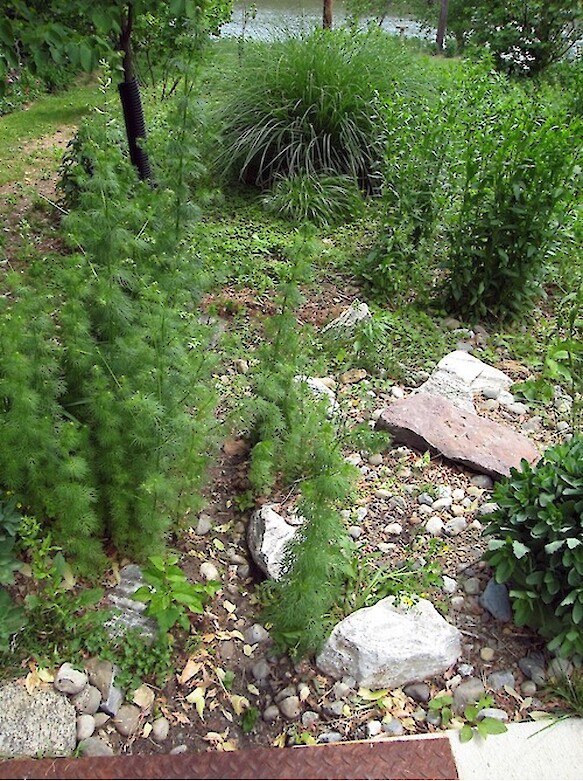The Chesapeake Bay Trust: Protecting and Restoring a Vital Ecosystem
M.J. Parsons ·The Chesapeake Bay is one of the most ecologically significant natural resources in the United States. As the largest estuary in the country, the Bay supports an extraordinary diversity of plant and animal life, provides drinking water and recreation for millions of residents, and serves as a crucial economic stimulus for the Mid-Atlantic region (NOAA, 2025).
For decades, the Bay and its watershed have faced rising pressures: nutrient and sediment pollution, habitat loss, declining fisheries, and the growing threat of climate change. As these challenges increase, the need for collaborative science-driven solutions is becoming increasingly urgent.
One organization at the lead of this effort is the Chesapeake Bay Trust (CBT). Since its founding in 1985, the Trust has worked to restore the Bay's ecological integrity by investing in projects that combine environmental impact with public engagement and education (Chesapeake Bay Trust [CBT], 2024a).
A Mission to Restore and Protect
The Chesapeake Bay Trust was established by the Maryland General Assembly in 1985 to encourage public involvement in the restoration and protection of the Chesapeake Bay and its tributaries. It is funded primarily through voluntary contributions to the Maryland Chesapeake Bay and Endangered Species Fund, as well as from state and federal agencies, foundations, and corporate sponsors (CBT, 2024a).
The Trust’s unique structure allows it to support community-led projects that reflect local priorities and needs while remaining scientifically grounded in best management practice. The CBT's vision for the future is clear: “The Chesapeake Bay and local watersheds are healthy and safe, our waters are fishable and swimmable, local communities benefit from these healthy resources, and everyone participates in restoring and protecting our natural resource treasures” (CBT, 2024a).
Environmental Focus Areas for the CBT
- Water Quality Improvement: Excess nutrients, primarily nitrogen and phosphorus, contribute to harmful algal blooms and oxygen-depleted "dead zones" in the Bay. The Trust supports green infrastructure solutions such as rain gardens to reduce urban stormwater runoff (EPA, 2023).

This rain garden catches stormwater and filters it before it reaches Spa Creek, which eventually leads into Chesapeake Bay. “Rain Garden in Amos Garrett Park” by Jane Thomas from Integration and Application Network is licensed under CC BY-SA 4.0.
- Habitat Restoration: Each year, CBT-funded projects plant native trees and grasses, stabilize shorelines, and restore wetlands to support biodiversity and resilience (CBT, 2024b).
- Environmental Education and Engagement: The Trust funds outdoor learning programs for students and professional development for educators to build environmental literacy (CBT, 2024b).

David Flores demonstrates to Baltimore students the use of a water quality probe. “Living Classrooms water quality demonstration” by Caroline Donovan from Integration and Application Network is licensed under CC BY-SA 4.0.
- Climate Resilience: CBT invests in climate adaptation strategies such as living shorelines and flood mitigation through natural systems (CBT, 2024a).
Measurable Impact of the CBT
In 2023, the Trust awarded over $18 million in funding to more than 700 environmental and educational projects. These efforts led to the planting of over 400,000 native trees and involved more than 150,000 individuals through volunteer and education programs (CBT, 2024b). An interactive map available on the CBT website allows users to search awarded projects via location, outcome, funding source and more (CBT, 2024c). This allows visitors to see the type of projects funded by CBT, as well as the significant geographical scope of the projects.
Scientific Partnership with UMCES
The CBT funded the development of a program by The University of Maryland Center for Environmental Science (UMCES) to improve how citizen scientists monitor submerged aquatic vegetation (SAV) in Chesapeake Bay. Since SAV plays a crucial role in the Bay’s ecosystem, consistent and accurate data collection and recording is essential. The project created standardized monitoring methods and comprehensive instructions.

Submerged aquatic vegetation (SAV) beds in the Choptank River. “SAV in the Choptank” by Ben Fertig from Integration and Application Network is licensed under CC BY-SA 4.0.
Conclusion: A Shared Responsibility
The health of Chesapeake Bay depends on all of us. The Chesapeake Bay Trust is empowering individuals, organizations, and institutions to act. With continued support, its impact will extend far beyond the Bay itself, restoring not only landscapes but also the relationship between communities and the environment.
References
- Chesapeake Bay Trust. (2024b). Annual report 2023. https://cbtrust.org/annual-report
- Chesapeake Bay Trust. (2024a). Mission and History. https://cbtrust.org/mission
- Chesapeake Bay Trust. (2024c). Impact of our work. https://cbtrust.org/impact-of-our-work/
- National Ocean Service. (2025). Where is the largest estuary in the United States? NOAA. https://oceanservice.noaa.gov/facts/chesapeake.html
- University of Maryland Center for Environmental Science. (n.d.). Development of SAV monitoring methods, manuals, and certification for citizen science in Chesapeake Bay. Integration and Application Network. https://ian.umces.edu/projects/development-of-sav-monitoring-methods-manuals-and-certification-for-citizen-science-in-chesapeake-bay/
About the author
M.J. Parsons

M.J. is a first year graduate student enrolled in the Master of Environmental Management (MEM) in Sustainability program at Frostburg State University. He received an undergraduate degree in Safety and Environmental Management from Slippery Rock University. M.J. is also employed at Frostburg State University as the Environmental Safety and Sustainability Officer.
Next Post > Climbing Down the Ivory Tower
Comments
-
Zhongshi He 8 months ago
M.J. offers a well-structured and compelling overview of the Chesapeake Bay Trust's vital role in watershed restoration and environmental education. What's really remarkable is how MJ shows the CBT isn't just a funder, but also a wonderful connector, helping people from all sorts of different fields work together, like educators, citizen scientists, schools, and policymakers.
-
Lina Goetz 8 months ago
I like how you mentioned that the future of the Bay is a shared responsibility. It comes to show how each organization plays their own part, but they are also all coming together for one common goal, which is to improve and maintain the overall health of the Bay.
-
Sabine Malik 8 months ago
The Chesapeake Bay Trust is one of the Bay organizations that I knew the least about beyond the Maryland license plates. This is a great summary of what they do and how they are involved in many key things! It's important to highlight these less talked about roles to people, as many likely donate knowing it's going generally towards the Chesapeake Bay, but don't know how the Chesapeake Bay Trust funds such impactful projects.
-
Vanessa Mukendi 7 months ago
Great blog post! Very informative. I like you clearly laid out the four areas of focus for the trust and included pictures to illustrate the work. I like how you included the measurable impact interactive map. This is a good way to visualize all the work being done.
-
Wyatt Palenchar 7 months ago
Great work demonstrating the CBT and what they do. I liked how you pointed out that the Trusts's unique structure is what helps make it successful. I also liked how you highlighted the work the Trust is doing in different areas

